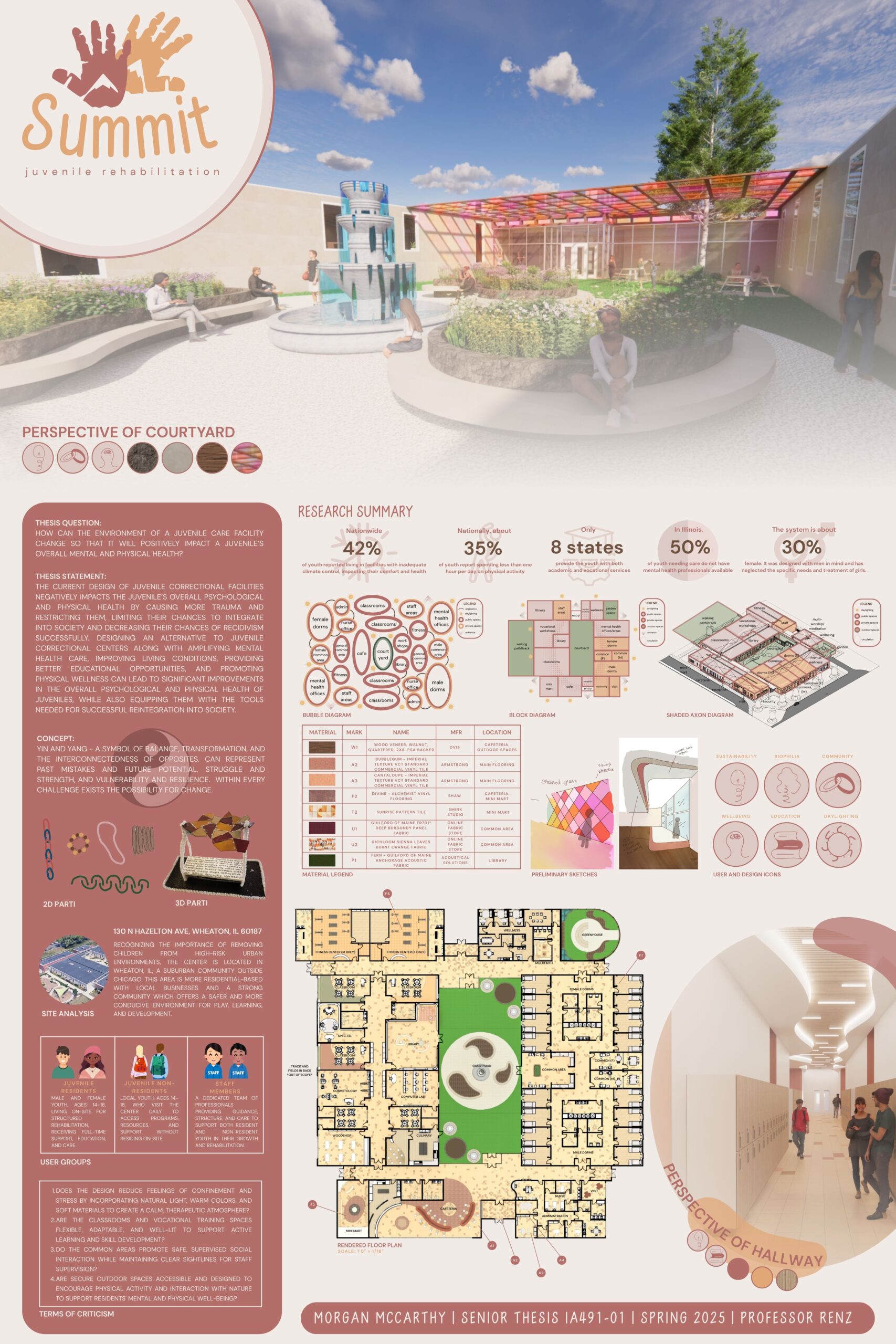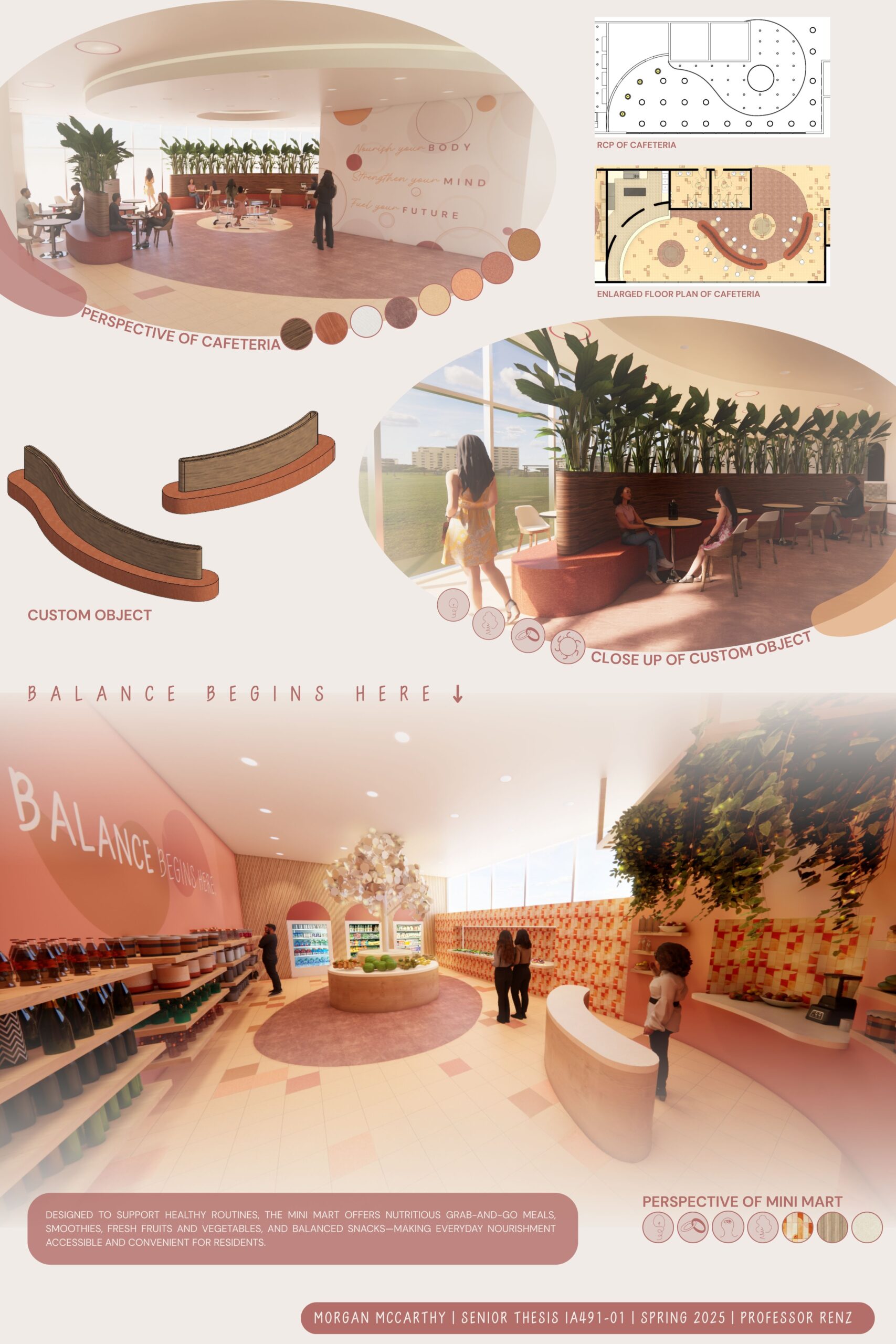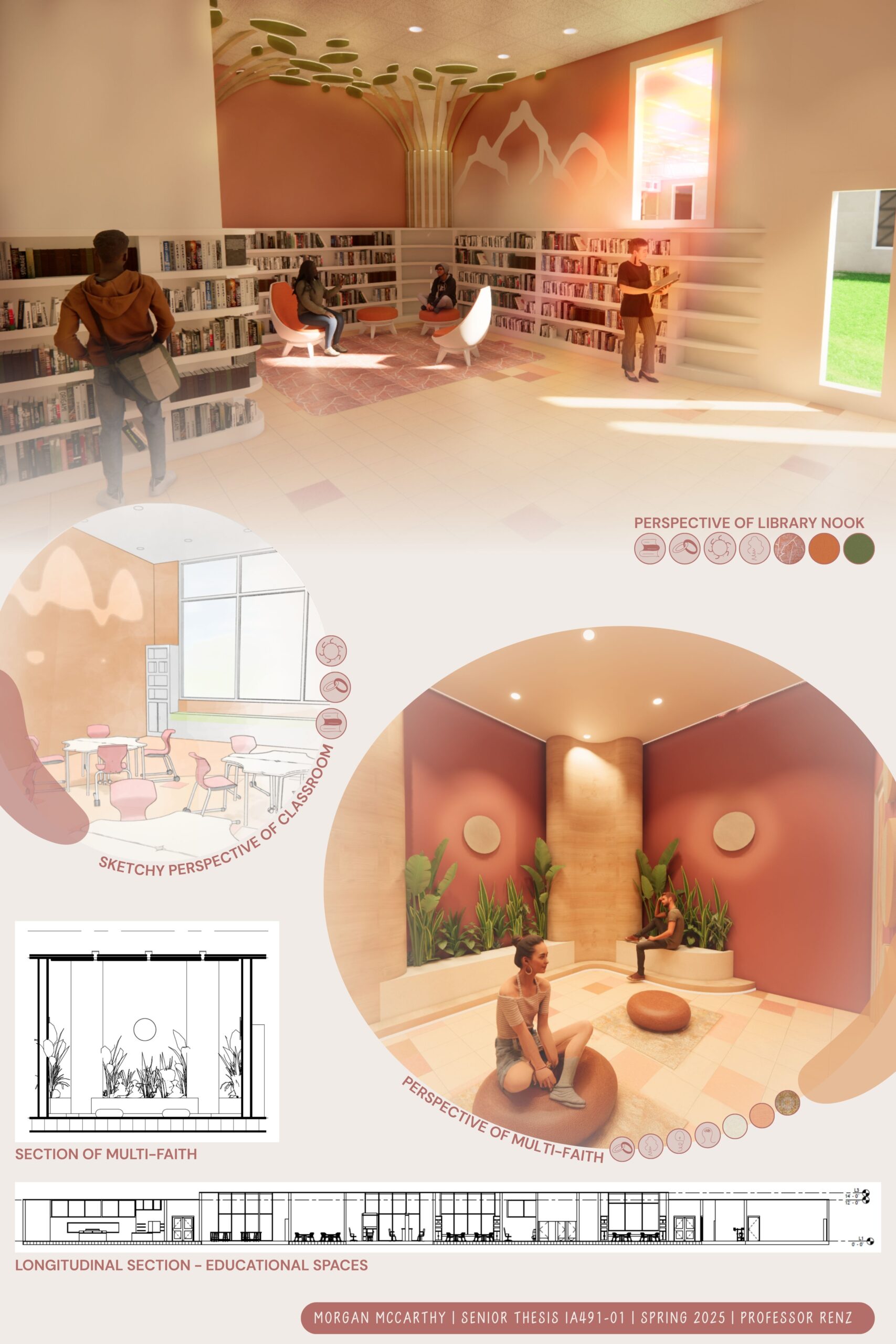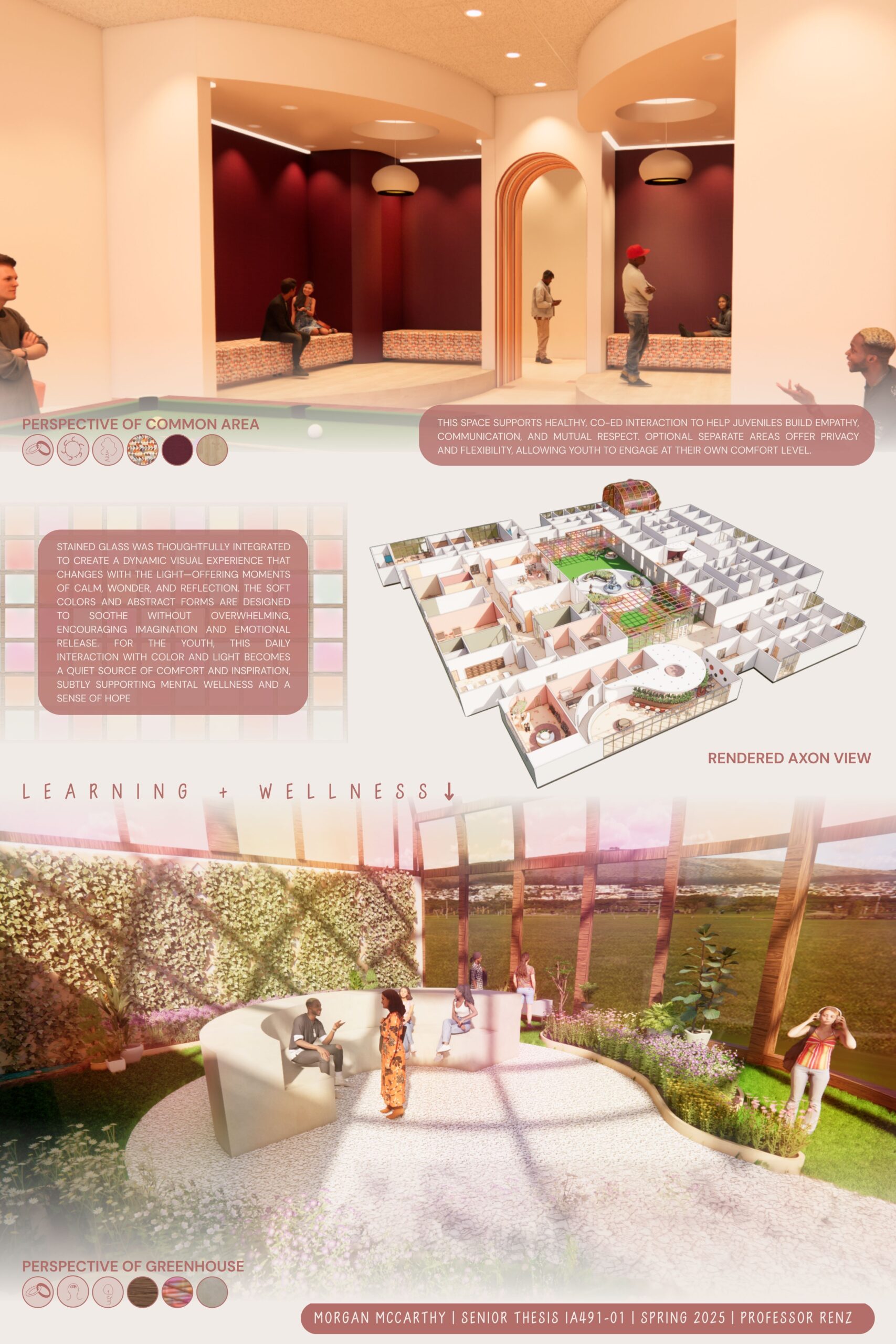Artist Biography
Morgan McCarthy will graduate in the spring of 2025 with a Bachelor of Fine Arts in Interior Architecture from Endicott College. Throughout her undergraduate studies, Morgan discovered a passion for researching the unique needs of her clients and the communities she designs for, ensuring that every space she creates serves a meaningful purpose. She believes that our environmental surroundings are the root of our well-being, shaping how we live, feel, and connect with the world around us.
In addition to her work in interior design, Morgan has completed multiple internships within the design industry, where she uncovered a strong interest in branding and advertising. Building on this newfound passion, she will be pursuing her Master of Business Administration in Marketing at Endicott College. Morgan is eager to merge her creative background with her marketing pursuits, using her design, storytelling, and social media skills to craft impactful experiences and grow in the marketing world after graduation.
Thesis Abstract
The Summit Juvenile Rehabilitation Center, located in Wheaton, Illinois, is a 43,000-square-foot design proposal that reimagines juvenile rehabilitation through a restorative and human-centered lens. In response to the community’s high juvenile crime rates, limited access to mental and physical healthcare, and educational disparities, this facility oers a holistic environment that prioritizes healing, dignity, and opportunity. Wheaton, a suburban city outside of Chicago, was intentionally selected as the site to remove youth from high-crime, overstimulating cities and place them within an accessible, supportive urban environment. This strategic location fosters a sense of retreat and reflection, without isolating them from community resources or opportunities for reintegration.
Rooted in principles of trauma-informed design, biophilia, and evidence-based spatial planning, the center integrates residential dorms, classrooms, therapy spaces, a cafeteria, fitness areas, and outdoor environments. Each space is intentionally designed to support emotional well-being, personal growth, and community reintegration. By merging interior architecture, social justice, and environmental psychology, this thesis challenges traditional punitive models and demonstrates how thoughtful design can act as a catalyst for change. The Summit Juvenile Rehabilitation Center serves as a forward-thinking prototype—one that empowers youth, restores hope, and reshapes the future of juvenile care through purposeful design.




